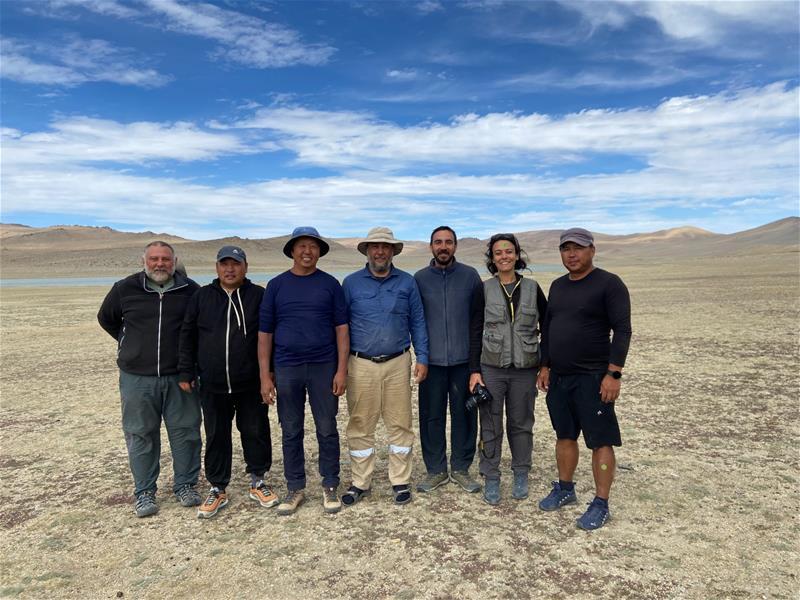Central Asia has been the subject to many studies from ITU for at least four decades. Ideas on not only the tectonic evolution, but also a new type of orogenic growth, named as ‘the Turkic type orogeny’, have been developed for this particular region also known as ‘Altaids’.The successful dating of palaeoevents along the Western Bogd and Valley of Lakes faults ın Central Asıa will contribute to our knowledge on the spatio-temporal seismic behaviour of these active tectonic structures.
Central Asia has been the subject to many studies from ITU for at least four decades. Ideas on not only the tectonic evolution, but also a new type of orogenic growth, named as ‘the Turkic type orogeny’, have been developed for this particular region, which is now known as ‘Altaids’. Almost three decades after the pioneering Nature paper on Altaids by Şengör et al. (1993) our joint project, which is funded from 2021 to 2024 by the TÜBİTAK and Mongolian Academy of Sciences (MAS), aims to reveal the details of active deformation along the western parts of the Gobi-Altay Shear Zone. This 200 km-wide sinistral system mostly uses the inherited structures of the former strike-slip faults of the Altaids in the south-southwestern Mongolia. Not only the Gobi Altay Shear Zone, but other major faults in the vicinity have generated four earthquakes with magnitudes equal or larger than 8 during a 52 years period in the 20th century (1905-1957).
The first leg of our field survey was held in the summer of 2022, in which researchers from ITU Department of Geological Engineering and Institute of Astronomy and Geophysics (MAS) performed several palaeoseismological trench studies on the Western Bogd and Valley of Lakes faults. The successful dating of palaeoevents of these trenches will contribute to our knowledge on the spatio-temporal seismic behaviour of these active tectonic structures. In 2023, we will extend our studies especially on morphochronological slip rate estimates in order to have a better picture on strain budget of this wide sinistral shear zone. At the end of the project, we are planning to provide more information on any possible stress transfer between strike slip faults of Mongolia and such continental environments.
Turkish Team: Cengiz Zabcı (ITU), Gürsel Sunal (ITU), M. Korhan Erturaç (GTU), Boris A. Natal’in (ITU), Havva Neslihan Kıray (ITU), Ali Akın (ITU), Cemre Ay (ITU)
MAS Team: Ulziibat Munkhuu, Nyambayar Tsend-Ayush, Boldbaatar Ganbaatar, Dolgoon Ayush, Battogtokh Devaasambuu, Bayasgalan Amgalan

.jpg?sfvrsn=6f6b2bfa_2)
.jpg?sfvrsn=d709ec16_2)
.jpg?sfvrsn=fe9d948_2)
.jpg?sfvrsn=d623ca9d_2)

.jpg?sfvrsn=d74aef63_2)